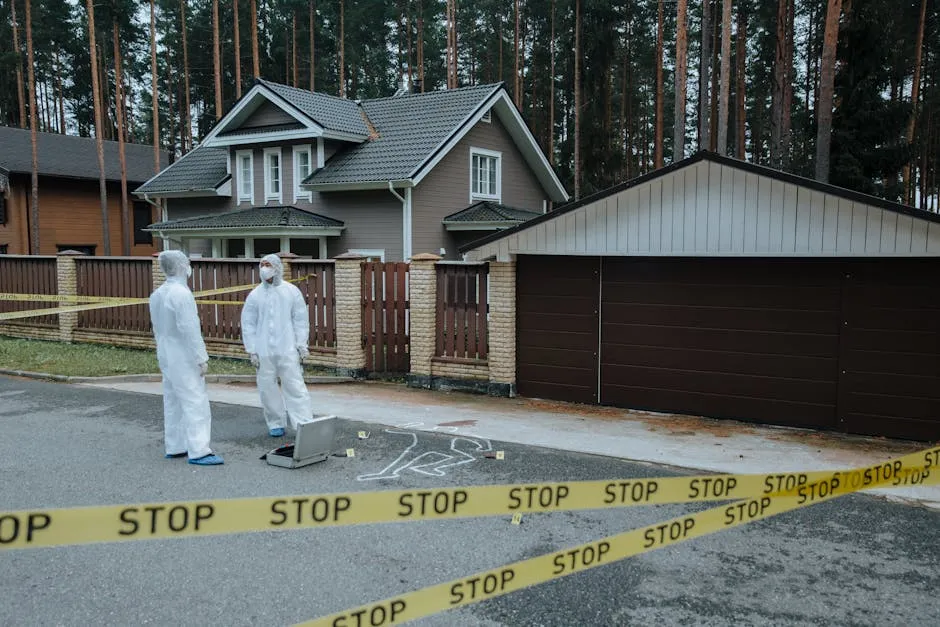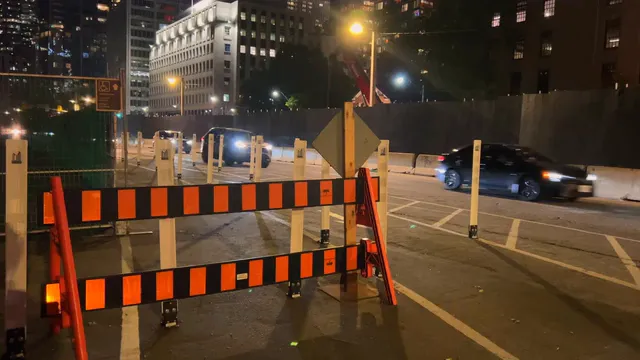Introduction
Understanding crime statistics is essential for residents, potential movers, and policymakers. You might ask, “Why should I care about numbers?” Well, these figures shape our perceptions and impact decisions. They tell stories about safety and security in our communities. For Lowell, Massachusetts, crime statistics act as a crucial lens through which we can view the city’s safety landscape.
Lowell sits in an interesting spot when compared to national crime averages. With a crime rate of 22.28 crimes per 1,000 residents, it’s not among the highest in the U.S., yet it presents a unique narrative. The probability of becoming a victim of a violent or property crime here is about 1 in 45. That’s a statistic that can make you think twice while strolling down the street.
This article aims to provide a comprehensive overview of Lowell crime statistics, trends, and perceptions. We’ll sift through data, analyze trends, and sprinkle in some local insights. By the end, you’ll have a clearer picture of what it’s like to live in Lowell, along with the potential risks and rewards.
Overview of Lowell Crime Statistics
Current Crime Rate Summary
Lowell’s crime rates tell a tale of contrasts. The city has a total population of 113,608 and reported 2,531 crimes last year. That breaks down to a violent crime rate of 4.12 per 1,000 residents and a property crime rate of 18.16 per 1,000 residents. To put these numbers into perspective, Lowell’s violent crime rate is slightly above the national average, while property crime rates are generally lower.
Violent crimes in Lowell included six murders, 24 rapes, 75 robberies, and a staggering 363 aggravated assaults. On the other hand, property crimes totaled 2,063, with 252 burglaries, 1,610 thefts, and 201 motor vehicle thefts. These numbers raise eyebrows, prompting discussions among residents about safety and security.
When comparing Lowell with national averages, it’s evident that violent crime rates hover around 9% higher than average, while property crimes are about 10.6% lower. This paints a mixed picture; while some categories may seem alarmingly high, others reflect a city working diligently to improve safety.
Understanding these statistics goes beyond mere numbers. They reflect community concerns and perceptions. For example, a recent survey revealed that while 50% of respondents feel “pretty safe,” a significant number expressed discomfort, especially when walking alone at night. This insight is crucial for anyone considering a move to Lowell, as safety perceptions often influence housing decisions, local business growth, and community engagement.

If you want to be proactive about your safety, consider investing in a Personal Safety Alarm. These handy devices can emit a loud sound to attract attention, giving you a sense of security while navigating the streets of Lowell.
The statistics serve as a starting point for deeper analysis in subsequent sections. As we explore historical trends, detailed breakdowns of violent and property crimes, and neighborhood analyses, we aim to provide a holistic view of Lowell’s crime landscape. So, buckle up as we navigate through the gritty details of crime in Lowell!
Historical Trends
Crime trends in Lowell have fluctuated significantly over the past few years. The data highlights both increases and decreases in specific crime categories, providing valuable insights into the city’s safety landscape.
From 2018 to 2022, Lowell experienced a noticeable rise in violent crime. In 2018, the violent crime rate stood at 324.14 per 100,000 residents. By 2022, this figure escalated to approximately 455 incidents, marking a considerable uptick. The most alarming trend was the 24.3% increase in violent crimes since the previous year, which has sparked concerns among residents.
Looking at the historical context, we see that murder rates have remained relatively stable, with six reported incidents last year. However, the rates for other categories like aggravated assaults and robberies have shown more volatility. For instance, aggravated assaults surged to 363 last year from previous counts, reflecting a concerning trend.
On the property crime front, statistics reveal a mixed bag. While property crimes dropped by 22.32% in 2018, they later rose again, with 2,063 incidents recorded last year. This suggests that while some progress is being made, crime remains a pressing issue for Lowell’s residents.
Consider arming yourself with knowledge and tools that can help. An Emergency Preparedness Guide can equip you with essential safety strategies to help you navigate uncertain situations.

Detailed Breakdown of Violent Crimes
Types of Violent Crimes
Lowell’s violent crime landscape primarily revolves around four main categories: murder, rape, robbery, and aggravated assault. Let’s break these down further.
Murder:
Lowell recorded six murders last year. This number is relatively low compared to the national average of around 6.3. However, any loss of life weighs heavily on the community and raises questions about safety.
Rape:
Rape incidents numbered 24 in the past year. This statistic is concerning, especially when juxtaposed with the national average of 40.7. The rise in reported rapes indicates that more victims are coming forward, which is a positive step in addressing this heinous crime.
Robbery:
With 75 robberies reported, Lowell’s robbery rate is lower than the national average of 135.5. Still, one robbery is one too many. A closer look reveals that robberies are primarily concentrated in certain neighborhoods, emphasizing the need for targeted law enforcement efforts.
Aggravated Assault:
Aggravated assaults reached a staggering 363 last year, reflecting a rise. This statistic is particularly troubling because it suggests a more aggressive form of violence is becoming prevalent. Comparatively, the national average for aggravated assaults is approximately 268.2, indicating that Lowell is facing a heightened risk in this area.
In summary, while Lowell does not report the highest numbers in every category, the trends suggest a city grappling with safety concerns, particularly in aggravated assaults. As we analyze these statistics, it’s crucial to recognize how they affect community perceptions and overall safety in Lowell.
Understanding these categories helps residents gauge their risks and encourages informed conversations about safety and community engagement. The statistics paint a picture of a city striving for improvement amid fluctuating crime rates.

Victimization Rates
When it comes to violent crime, Lowell residents should understand the odds. The probability of becoming a victim of violent crime in Lowell is about 1 in 243. Comparatively, in Massachusetts, it’s about 1 in 311. That’s a little concerning, right? Picture yourself walking through a bustling market, and suddenly you realize those numbers are very real.
One resident, Jane, shared her experience: “I feel safe during the day, but when the sun sets, I clutch my purse like it’s a golden ticket.” Many locals echo this sentiment. According to a recent survey, 50% of respondents feel “pretty safe” during daylight hours, but 69% express discomfort when walking alone at night. In terms of perception, that’s a significant gap. Lowell may not be the Wild West, but there are certainly areas where a heightened sense of awareness is warranted.
To bolster your personal safety, consider carrying a Pepper Spray. It’s a practical tool that can provide peace of mind as you navigate the streets, ensuring you’re prepared for unexpected situations.

Neighborhood Analysis
Lowell’s neighborhoods tell their own stories when it comes to crime. Some areas are veritable havens of safety, while others seem to have a “Welcome to Crime City” sign. The safest neighborhoods include Belvidere and South Lowell. These spots boast lower violent crime rates, giving residents peace of mind.
Conversely, neighborhoods like The Acre and parts of Centralville experience higher violent crime rates. Factors such as population density, socioeconomic challenges, and local engagement play a significant role in these statistics. For instance, a neighbor shared that “it’s the community programs and neighborhood watch initiatives that make Belvidere feel like home.”
In summary, while some neighborhoods shine bright in terms of safety, others require attention. Being aware of these dynamics can help residents make more informed decisions about where to live and what precautions to take. The landscape of crime in Lowell is complex, influenced by various community factors that shape perceptions and realities of safety.
Consider enhancing your home security with a Home Security Camera. These devices provide an extra layer of protection, allowing you to monitor your property and feel more secure in your space.

Victimization Rates
In Lowell, the chances of becoming a victim of property crime are quite eye-opening. Statistically, the odds are about 1 in 55. Yes, that’s right—one in every 55 residents could face the unfortunate experience of losing a prized possession. If you think that sounds high, you’re not alone! It’s a number that breeds caution among the locals.
As for neighborhoods, some areas are more prone to property crimes than others. For instance, The Acre and Centralville often report higher incidents of theft and burglary. Residents have noticed patterns, with crime often peaking during certain times of the year. One resident remarked, “I lock my doors, but I can’t shake the feeling that someone is watching.” Such sentiments highlight the palpable tension surrounding property safety in these areas.
To help safeguard your valuables, consider investing in an RFID Blocking Wallet. These wallets protect your personal information from electronic theft, so you can shop and roam with confidence.

Community Impact
Property crime rates in Lowell don’t just affect individuals; they ripple through the entire community. Local businesses often feel the heat when crime rates rise. For instance, shop owners in The Acre have reported a decline in foot traffic. One café owner shared, “Once, we had a steady stream of customers, but now people seem hesitant to venture out.” This hesitation can lead to significant financial losses for small businesses.
Moreover, the community initiatives aimed at mitigating these crimes face hurdles. Fundraising for neighborhood watch programs can dwindle when residents feel unsafe. The uncertainty fosters a sense of division, making it harder to build the strong, united front necessary to combat crime effectively. As one community leader pointed out, “When crime looms large, community spirit can diminish.”
Understanding these dynamics is crucial. The impact of property crime goes beyond mere statistics; it touches every aspect of life in Lowell, from local businesses to the overall atmosphere of community trust and safety. Without addressing these issues, the vibrant spirit of Lowell may continue to wane.

If you’re looking to enhance your home security, consider a Home Security System. Investing in a comprehensive system can provide peace of mind and deter potential criminals from targeting your property.
Crime Rate Comparison
Comparison with Other Cities
When we stack Lowell against other cities in Massachusetts and nationwide, the numbers tell a revealing story. Lowell’s total crime rate stands at 22.28 per 1,000 residents, which is slightly lower than the national average but still higher than some comparable cities.
In Massachusetts, cities like Chelmsford and Dracut show lower overall crime rates, with Chelmsford clocking in at around 17.65 per 1,000 residents. Conversely, cities such as Springfield and Fall River present higher crime rates, with Springfield reaching approximately 29.0 per 1,000 residents.
A handy table illustrates these comparisons:
| City | Total Crime Rate (per 1,000 residents) | Violent Crime Rate (per 1,000 residents) | Property Crime Rate (per 1,000 residents) |
|---|---|---|---|
| Lowell | 22.28 | 4.12 | 18.16 |
| Chelmsford | 17.65 | 2.3 | 15.35 |
| Dracut | 19.42 | 1.9 | 17.52 |
| Springfield | 29.0 | 5.1 | 23.9 |
| Fall River | 31.5 | 7.0 | 24.5 |
Visualizing this data underscores Lowell’s position. While it may not be the worst, it’s far from the safest. The higher property crime rates in neighborhoods like The Acre raise eyebrows and concern.

Nationally, cities like Detroit and St. Louis present markedly higher crime rates, but that doesn’t take the edge off the anxiety residents feel in Lowell. With 1 in 45 residents at risk of becoming a crime victim, there’s a collective urge to foster a safer environment.
As we sift through these statistics, it’s clear that while Lowell may not be at the top of crime charts, continued vigilance and community engagement are necessary. The data serves as a reminder that safety is a shared responsibility, and every resident plays a role in shaping the narrative of their neighborhood.
Analysis of Safety Grades
When it comes to understanding safety in Lowell, various sources provide insights. Niche and AreaVibes are two go-to platforms for safety grades. According to Niche, Lowell earns a grade of C minus. This grade results from analyzing both violent and property crime rates. Not exactly an A+, right? It suggests that while Lowell isn’t the worst place to live, residents should keep their eyes peeled.
AreaVibes echoes this sentiment, reporting that Lowell’s crime rate is about 8% lower than the national average. However, the violent crime rate is 9% higher than the national average, making for a slightly concerning juxtaposition. So, what does this mean for current and potential residents? It indicates that while Lowell has its charm, it also comes with a few bumps along the road.
These grades matter. They influence decisions for potential movers and guide current residents in understanding their environment. A C minus might not sound terrible, but it raises eyebrows and questions about safety. Will you feel comfortable walking your dog at night? Or enjoying a leisurely evening stroll? These grades serve as a gentle reminder for all to stay vigilant.

Community Perception of Crime
Surveys and Polls
Community sentiment often shapes the perception of crime more than statistics. Recent surveys reveal that feelings of safety among Lowell residents vary widely. In a poll conducted by Niche, 50% of respondents reported feeling “pretty safe.” They mentioned some safety concerns but generally felt at ease. However, 28% felt “somewhat safe,” indicating notable apprehensions, especially after sunset. Interestingly, only 18% felt “very safe,” and 5% expressed high concern.
This data illustrates a duality in perceptions. The presence—or lack—of visible law enforcement often plays a role here. According to a similar poll, 39% of residents believe police are both visible and responsive. However, nearly one-third expressed that police respond slowly when needed, underscoring a gap in community trust. The perception of safety is not merely a statistic; it’s a sentiment that can impact local businesses and community cohesion.

Local Initiatives
Local initiatives also reflect a community’s commitment to safety. Programs aimed at crime reduction are vital. For instance, the Lowell Police Department collaborates with local organizations to host community events focused on safety awareness. One local leader remarked, “When we engage with the community, people feel safer.” These programs foster connections between law enforcement and residents, creating a united front against crime.
Moreover, neighborhood watch programs have gained traction. Residents are encouraged to participate and report suspicious activities. As one community member put it: “We look out for each other. It’s a small gesture, but it makes a difference.” Such initiatives not only enhance safety but also build trust and relationships within the community.
Collectively, these surveys and local efforts paint a picture of Lowell that extends beyond mere statistics. They highlight a community actively engaging in its safety narrative, making it a place where residents can feel empowered to effect positive change.

Conclusion
Lowell’s crime statistics present a mixed bag. On one hand, the city has a crime rate slightly lower than the national average, which might be comforting. On the other hand, the increased rates of violent crime raise eyebrows. The data indicate a need for ongoing community engagement and proactive law enforcement efforts.
It’s crucial for residents and policymakers to stay attuned to these shifts. Crime doesn’t exist in a vacuum; it evolves, influenced by various factors. Community involvement can play a pivotal role in shaping a safer Lowell. Engaging in local initiatives, supporting law enforcement, and being vigilant can significantly impact safety perceptions.
In conclusion, while Lowell isn’t the safest city in Massachusetts, it’s not necessarily a dangerous place either. Understanding these crime statistics is vital for residents and decision-makers alike. Together, we can craft a safer and more vibrant community.
FAQs
What are the most common crimes in Lowell?
Lowell experiences a variety of crimes, but the most common include: 1. Theft: The highest reported crime, with over 1,600 incidents last year. 2. Burglary: Approximately 252 incidents, primarily affecting residential areas. 3. Aggravated Assault: With 363 reported incidents, this crime raises significant safety concerns. 4. Robbery: At 75 incidents, it’s lower than the national average but still a concern. These statistics highlight the need for vigilance among residents.
How does Lowell’s crime rate compare to other Massachusetts cities?
When compared to similar-sized cities in Massachusetts, Lowell’s crime rate of 22.28 per 1,000 residents is slightly higher than Chelmsford (17.65) and Dracut (19.42). However, it remains lower than Springfield (29.0) and Fall River (31.5). These comparisons may help potential residents gauge where Lowell stands in relation to surrounding neighborhoods.
What measures are being taken to improve safety in Lowell?
Local authorities and community leaders are implementing several initiatives to enhance safety. Some of these include: – Community policing efforts: Building trust between law enforcement and residents. – Neighborhood watch programs: Encouraging residents to report suspicious activities. – Safety awareness events: Educating the community about crime prevention strategies. These measures aim to foster a collaborative approach to crime reduction.
Where can I find more information about crime in Lowell?
Those looking for in-depth information about Lowell’s crime statistics can explore resources such as: – Local police department reports: Offering detailed crime data and trends. – NeighborhoodScout: For comparative crime statistics. – Niche and AreaVibes: Providing community insights and safety grades. These platforms can offer valuable insights into safety and crime in Lowell.
Please let us know what you think about our content by leaving a comment down below!
Thank you for reading till here 🙂
For more detailed insights into crime data in Lowell, check out the Lowell crime statistics.
All images from Pexels




